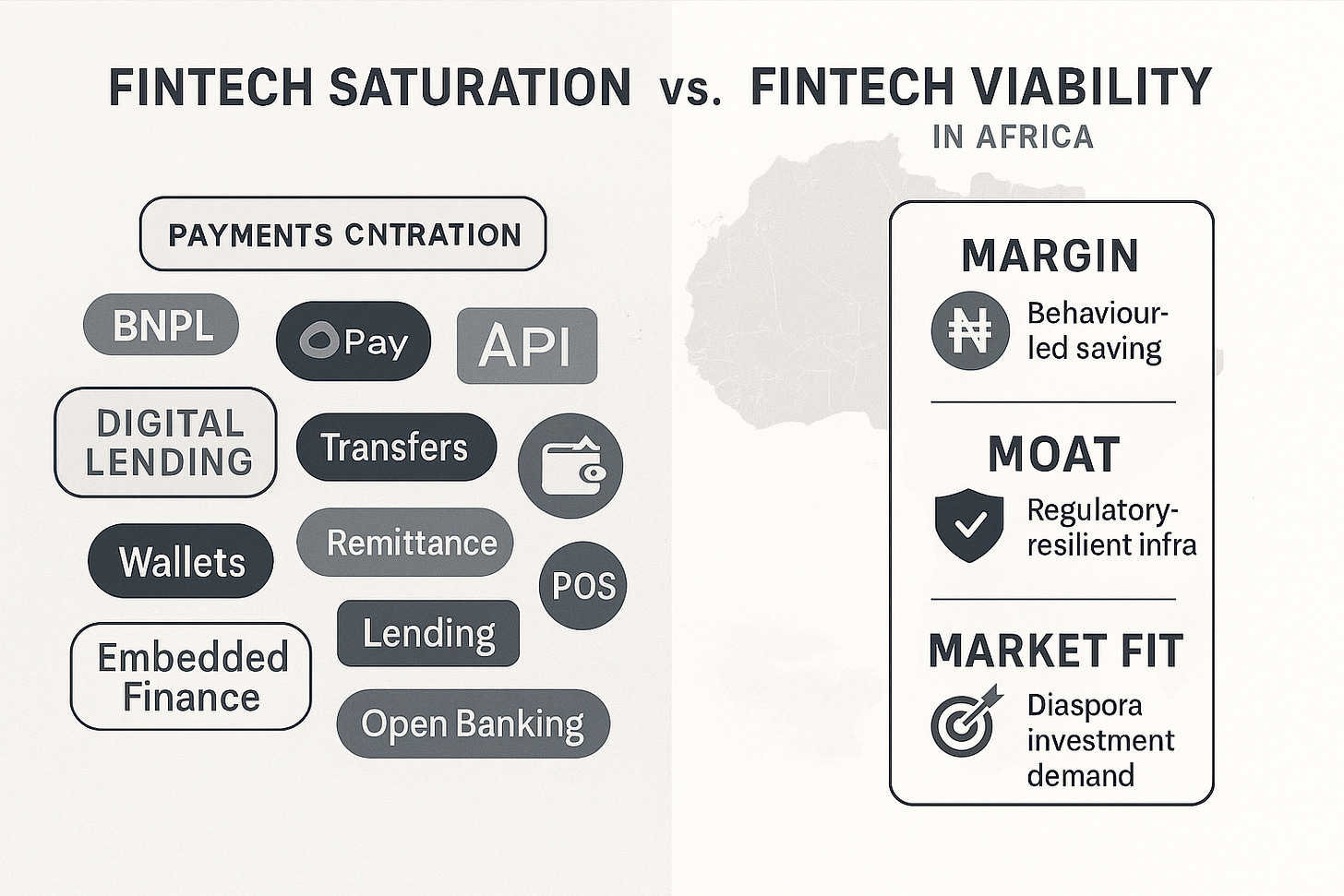Fintech Fever: Why the African Startup Ecosystem’s Obsession is Misguided
Not all fintech is created equal. Some verticals are overserved, others fundamentally misunderstood. And the smartest capital is already adjusting
There’s a running joke that every African founder wants to “build the Stripe of Africa.”
But it’s not really a joke. It’s a reflection of how reflexive the ecosystem has become.
Across Africa, fintech absorbs an outsized share of startup funding. In 2023, fintech accounted for 43% of all venture capital raised on the continent — a number that’s held relatively steady over the past four years. The next biggest category, e-commerce and logistics, typically lags behind by a margin of 20 percentage points or more.
This investor skew has predictable effects.
Founders chase capital, and capital chases patterns.
So what we’ve ended up with is a startup ecosystem obsessed with fintech, not because all its problems are the most urgent, or its models the most viable — but because fintech looks most fundable.
The result?
Saturation in some areas, missed opportunity in others, and a flattening of nuance around which fintech models are still worth backing.


